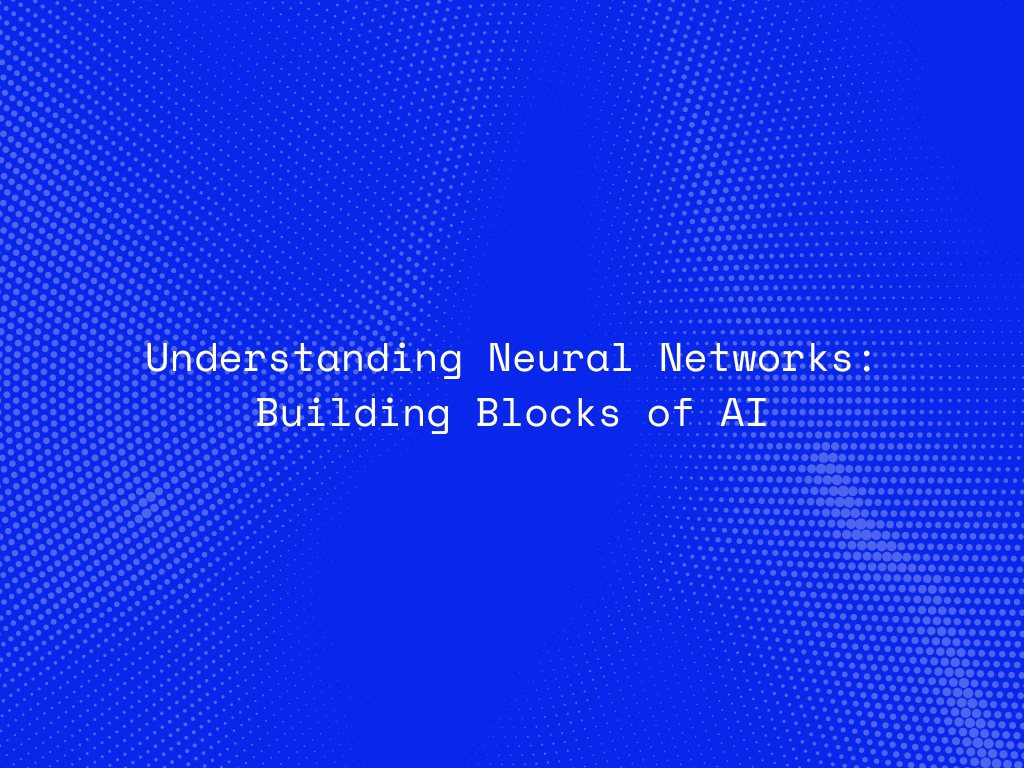In today’s era of digital transformation, Artificial Intelligence (AI) has become ubiquitous, permeating every aspect of society – from self-driving cars and virtual voice assistants to fraud detection and medical diagnostics. At the very core of this paradigm shift lie neural networks, bio-inspired mathematical constructs mimicking the functionality of the human brain. This enhanced blog post delves deeper into the fascinating realm of neural networks, elucidating their underlying components, mechanisms, and far-reaching ramifications in contemporary AI applications.
Unraveling the Mysteries of Neural Networks:
At first glance, neural networks appear daunting due to their seemingly impenetrable web of interconnections and abstract terminology. Nevertheless, once broken down into digestible constituents, their elegance becomes apparent, revealing a modular design amenable to customization and extension. Let us examine each essential element comprising a typical neural network:
1. Input Layer: Representing the initial point of contact, the input layer ingests raw data for subsequent processing. Here, each node corresponds to an independent attribute or feature embedded within the dataset. For instance, an image classification task might involve pixels constituting the input layer nodes.
2. Hidden Layers: Encompassing most of the computational prowess, hidden layers house artificial neurons executing nonlinear mappings on weighted combinations of inputs. Often organized hierarchically, these intermediate stages facilitate progressive refinement of latent representations, ultimately yielding informative encodings. Moreover, stacking multiple hidden layers engenders deep neural networks, further bolstering expressiveness and fostering nuanced comprehension of complex phenomena.
3. Activation Functions: Crucial for introducing nonlinearity, activation functions endow neural networks with the capacity to capture subtle interactions among attributes and decipher convoluted relationships lurking beneath superficially benign facades. Examples of prevalent activation functions include sigmoid, hyperbolic tangent (tanh), rectified linear unit (ReLU), and leaky ReLU, each boasting distinctive characteristics tailored to specific contexts.
4. Output Layer: Serving as the terminal station, the output layer generates anticipated responses contingent upon processed inputs and learned associations. Depending on the task at hand, the format of these deliverables varies substantially, assuming either categorical distributions (e.g., multi-class classification) or scalar estimations (e.g., regression).


Training Paradigms for Neural Networks:
Once assembled, a fledgling neural network necessitates instruction to discern meaningful patterns concealed within vast seas of data. This indoctrination ensues through an iterative procedure known as training, wherein two prominent methodologies coalesce:
1. Backpropagation Algorithm: Essentially functioning as a gradient descent engine operating in reverse gear, the backpropagation algorithm computes error gradients relative to weights and biases via chain rule derivatives. Subsequently, these retrograde signals cascade backwards throughout the network, guiding successive modifications aimed at reducing total discrepancy between predicted and actual outcomes.
2. Gradient Descent Optimizers: Operating synergistically with backpropagation, gradient descent optimizers manipulate trainable parameters stochastically or deterministically, seeking minima conducive to accurate forecasts. Among widely employed variants figure vanilla gradient descent, mini-batch gradient descent, Adam, RMSProp, and Adagrad, each presenting unique convergence properties suited to varying scenarios.
Diverse Flavors of Neural Networks:
Beyond rudimentary incarnations, neural networks manifest themselves in manifold configurations, accommodating disparate problem domains and operational constraints:
1. Feedforward Neural Networks (FNNs): Constituting the simplest embodiment, FFNs embody acyclic graphs lacking reciprocal connectivity amongst nodes, thereby facilitating straightforward feedforward message passing. Despite their elementary construction, FFNs remain effective for basic pattern recognition tasks involving minimal structural dependencies.
2. Recurrent Neural Networks (RNNs): Capitalizing on cyclic links woven amongst adjacent elements, RNNs dynamically accommodate sequential data by recursively folding prior states into ongoing deliberations. Predominantly deployed in natural language processing and speech recognition disciplines, RNNs exhibit remarkable adeptness at handling temporally extended artifacts.
3. Convolutional Neural Networks (CNNs): Specializing in computer vision pursuits, CNNs capitalize on locality preserving convolutions applied judiciously across spatial dimensions, selectively amplifying pertinent cues whilst suppressing irrelevant distractions. Such hierarchical compositions enable efficient decomposition of visual scenes into object parts, facilitating precise identification and localization efforts.
4. Long Short-Term Memory (LSTM): Augmenting standard RNN designs, LSTM equips memory modules with gating mechanisms, affording unprecedented control over persistent retention and ephemeral forgetfulness. Armed with these versatile capsules, LSTM demonstrates superior proficiency in managing long-range temporal dependencies, rendering it particularly apt for intricate sequence modeling enterprises.
Applications Abound:
Emboldened by their universal approximation theorem, neural networks reign supreme across myriad industrial landscapes, propelling innovation through relentless pursuit of automation, augmentation, and enhancement:
1. Computer Vision: Bolstered by advances in CNNs, computer vision continues to flourish, spawning ingenious inventions ranging from pedestrian detection and gesture recognition to radiographic interpretation and surgical assistance.
2. Speech Recognition: Ubiquitous smart devices owe much of their conversational fluency to sophisticated neural network architectures seamlessly translating spoken commands into actionable directives.
3. Natural Language Processing: From sentiment analysis and machine translation to question answering and summarization, neural networks spearhead progress towards increasingly sentient machines able to comprehend, generate, and interact naturally with human counterparts.
Conclusion:
Undeniably, neural networks stand tall as cornerstone edifices buttressing the burgeoning edifice of AI. By exposing their innards and illuminating their functionalities, we hope to inspire budding enthusiasts keen on mastering these enchanting marvels, catalyzing a wave of creativity culminating in original contributions advancing humanity’s collective wisdom. Keep watch for forthcoming articles unearthing advanced topics, debunking common misconceptions, and spotlighting real-world triumphs heralding the advent of smarter tomorrow!




